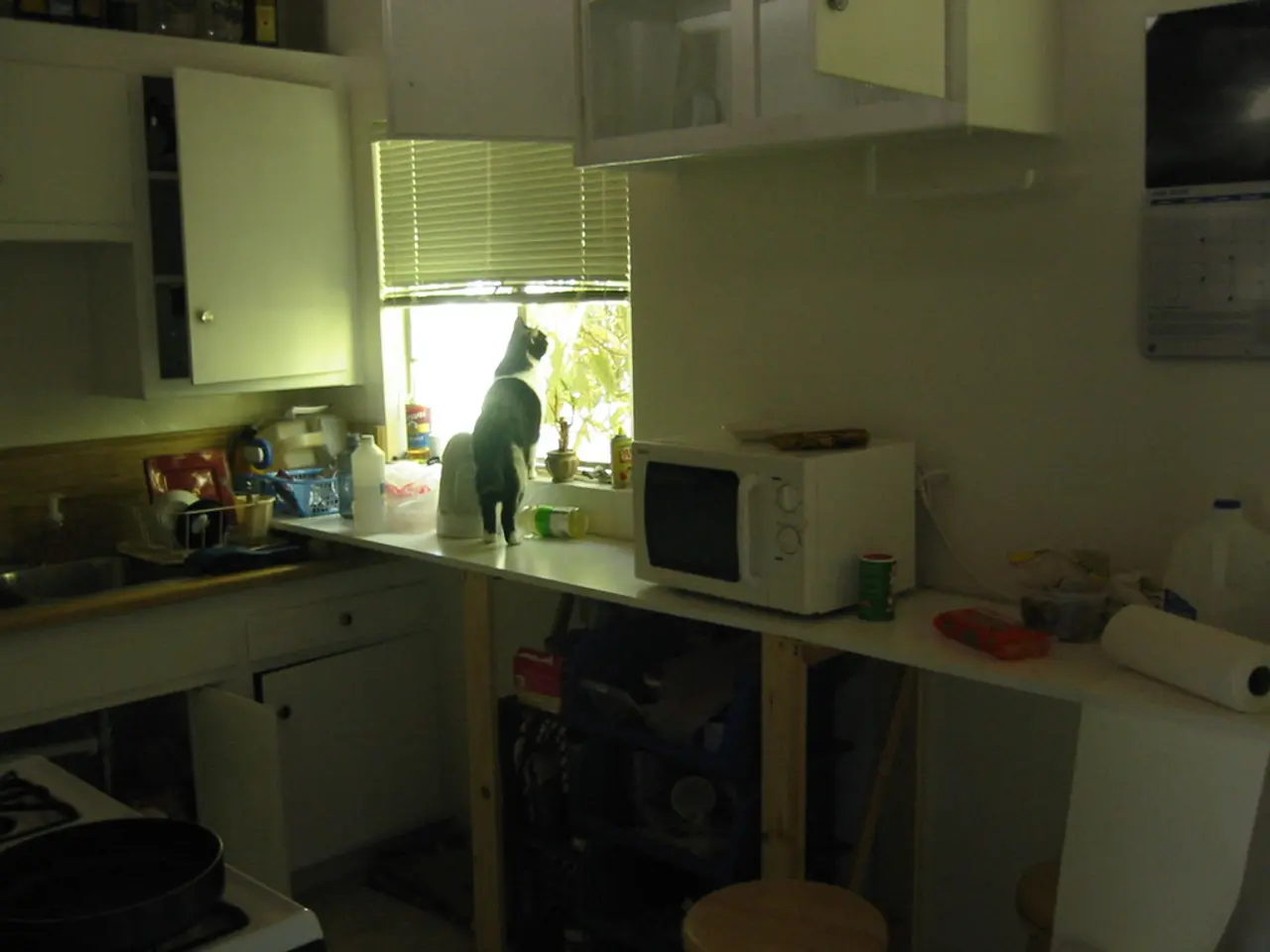Refreshing Outdated Windows: A Comprehensive Walkthrough
====================================================================
In the realm of home improvement, the question of whether to restore or replace old windows often arises. Here's a helpful guide to help you make an informed decision.
Restoring Old Windows: The Advantages
When historical or antique value is a concern, restoring old windows is usually the better choice. Not only can this approach achieve energy efficiency comparable to modern windows, but it also preserves the unique aesthetic of older buildings.
Restoration offers several benefits. It maintains the historical look and feel, preserving unique antique glass types like wavy or bullseye glass found in 19th- and early 20th-century windows. Properly restored windows, including stripping paint and resealing, can last 50+ years with ongoing maintenance and often cost less over time than multiple replacements. Restoration can be particularly economical for high-quality timber or bespoke windows, which are costly to replace.
When Replacement Might Be Better
Old windows that are very inefficient, such as single-pane windows with poor sealing, can waste significant energy, leading to higher utility bills. New energy-efficient windows (double- or triple-pane) may offer better comfort and can reduce heating and cooling costs by 20-30%, although payback periods for energy savings alone often exceed 10 years.
Replacement may be preferred if the old windows are beyond repair or if the historical value is low, making new windows a potentially sound investment for energy savings and reduced maintenance.
Cost-Effectiveness Comparison
| Factor | Restoration | Replacement | |-----------------------------|-------------------------------------------------|----------------------------------------------| | Initial cost | Lower, repair-focused | Higher, full window manufacturing and install| | Longevity | 50+ years with maintenance[1][3] | Typically warrantied ~20 years, then replacement needed[1] | | Energy efficiency | Comparable if properly weatherized[1] | Potentially better with new double/triple glazing[4] | | Historical value preservation| Preserved uniquely antique glass and style[1] | Lost if window type replaced | | Maintenance and repair cost | Requires ongoing maintenance | Lower maintenance but eventual full replacement[1][2] |
Making an Informed Decision
In summary, restore old windows when preserving historical character and achieving good energy performance cost-effectively is important, especially for antique or high-quality timber windows. Opt for replacement primarily when windows are severely deteriorated, lack historic value, or when upgrading to significantly more energy-efficient windows justifies the higher upfront cost and long payback period.
For DIY enthusiasts, minor damage can be addressed through restoration projects. However, complex repairs or jobs spanning several stories should be handled by a professional. It's important to evaluate old windows for damage before considering restoration, and consult with a professional if the windows are historic or if performance is a top priority.
If you're unsure whether your windows are worth saving, consider having an energy auditor or contractor perform an inspection. The cost to replace window glass is about $300-$700 per window, while the national average cost for window repair ranges from $100 to $800.
Today's best window brands offer a comprehensive line of window frame styles and materials to suit various architectural styles. If a new pane of glass (in the case of single-pane windows) is needed, consult with a local window shop or home improvement store. Small upgrades like installing storm window inserts, replacing weather stripping and caulk, applying insulating window film, and layering up shades and thermal curtains can improve the energy efficiency of restored windows.
In historic homes, it's usually best to restore original windows to preserve the home's character. However, in cases of severe damage, replacement windows may be necessary. Restoring old windows can help preserve a home's character and potentially save money, depending on the severity of the damage. Upgrading to energy-efficient windows can help reduce utility bills.
- Investing in roofing insulation and energy-efficient window solutions, such as storm window inserts or insulating window film, can contribute to a more energy-efficient home-and-garden lifestyle by improving the energy performance of restored windows.
- For complex repairs or Johannes-sized projects on old windows spanning several stories, it's advisable to hire a local contractor for professional assistance to ensure the best results.
- When contemplating the use of power tools for window restoration projects, it's essential to choose tools suitable for the task at hand, such as scrapers, putty knives, and paintbrushes, to successfully complete the restoration.
- In renovated homes with modern roofing designs, replacing old windows with energy-efficient alternatives can make a significant impact on lifestyle and utility bills due to improved insulation and energy efficiency.




